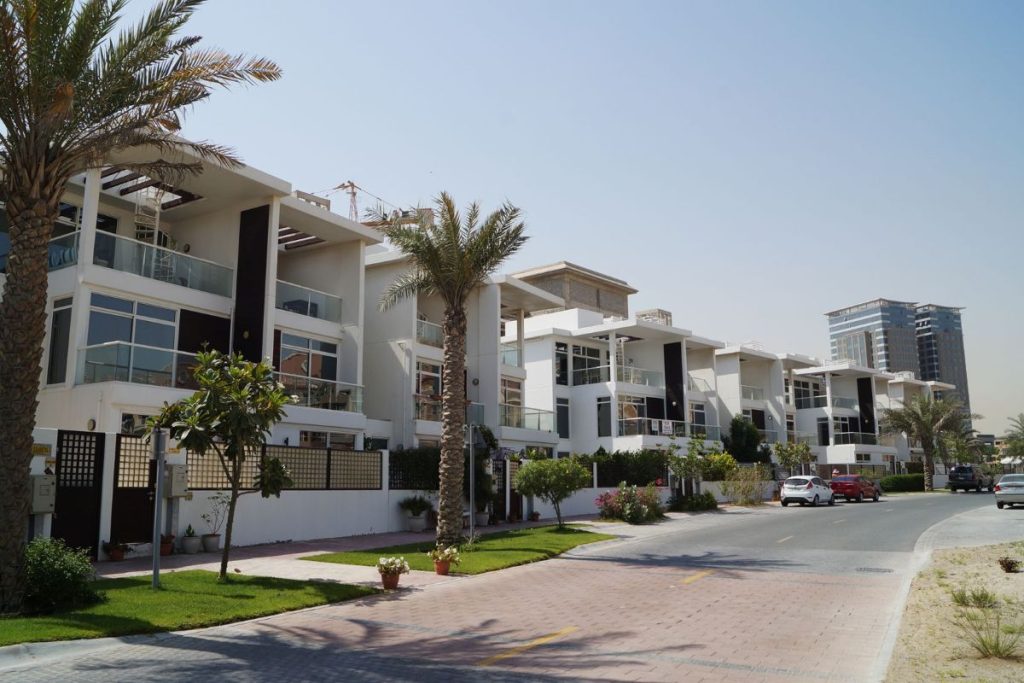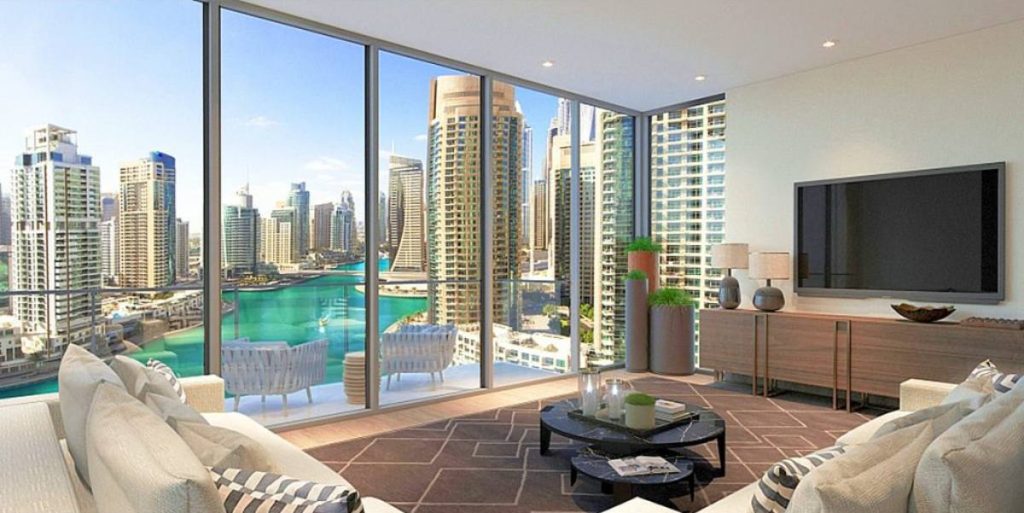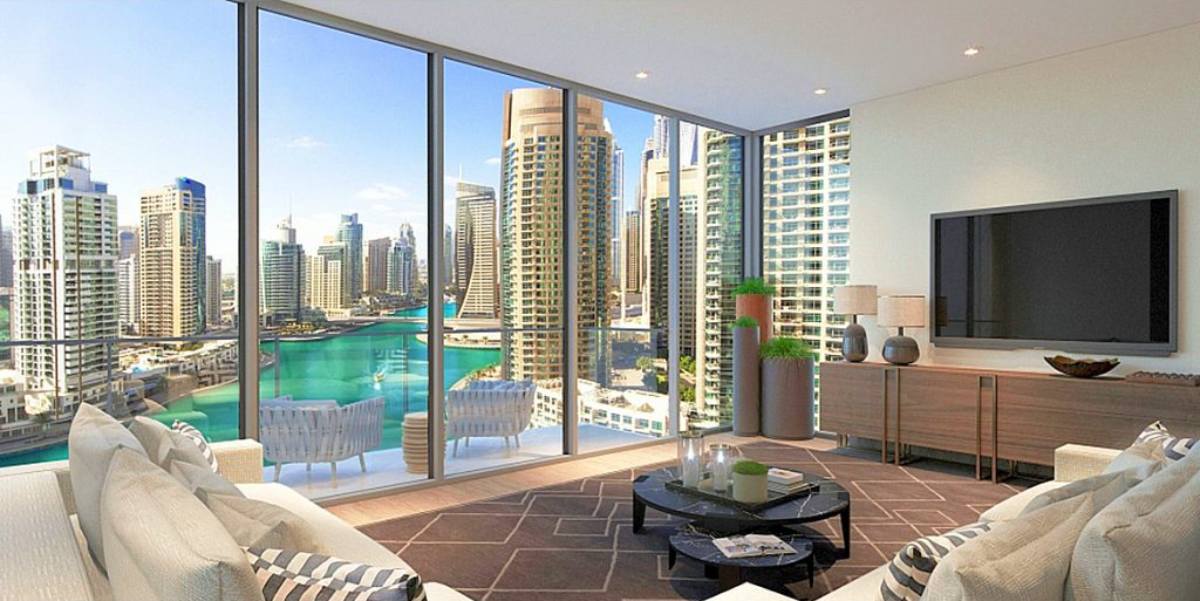Types of Accommodation in Dubai for Every Lifestyle
When exploring accommodation in Dubai, one quickly realizes that the city’s real estate market is built on diversity and flexibility. Dubai is not just a hub for luxury seekers but also a place that welcomes expatriates, professionals, and families with different income levels and lifestyle preferences. From high-rise apartments with waterfront views to sprawling villas in gated communities and serviced residences offering hotel-like amenities, the city caters to a wide range of demands. Understanding the differences between these housing types, as well as the rental structures and practical aspects, is crucial for anyone planning to live or invest in Dubai in 2025.
Apartments, Villas, and Serviced Residences Compared
Apartments dominate the accommodation market in Dubai, especially in high-density communities like Downtown Dubai, Dubai Marina, and Jumeirah Lake Towers (JLT). Apartments are the most popular option for single professionals and small families, primarily due to their convenient locations, modern facilities, and affordability compared to villas. Sizes range from compact studios averaging 400–500 sq. ft. to luxury penthouses exceeding 5,000 sq. ft. Rental costs vary significantly: a one-bedroom in Marina averages around AED 95,000 annually in 2025, while premium penthouses in Palm Jumeirah can exceed AED 600,000.
Villas, on the other hand, are designed for those seeking more privacy, space, and family-oriented living. Communities like Arabian Ranches, Jumeirah Park, and Emirates Hills are particularly attractive to families and high-net-worth individuals. Villas often come with private gardens, pools, and multiple parking spaces, making them suitable for long-term living. Annual rents for a three-bedroom villa in Arabian Ranches start around AED 180,000, while a five-bedroom villa in Emirates Hills can command more than AED 1.2 million per year.
Serviced residences combine the privacy of an apartment with the luxury of hotel-style living. Found in areas like Business Bay and DIFC, these accommodations are preferred by frequent travelers, consultants, and executives. Amenities include housekeeping, concierge services, and access to gyms and pools. Prices are higher compared to regular apartments, with a one-bedroom serviced unit averaging AED 140,000 per year.
Short-Term vs. Long-Term Accommodation in Dubai
Dubai’s accommodation market is unique because it caters to both short-term visitors and long-term residents. Short-term accommodation in Dubai is typically offered through holiday homes, Airbnb-style rentals, and serviced apartments. This option is popular with tourists, business travelers, and those relocating temporarily. Flexibility is the key advantage, as tenants can rent by week or month without entering into a binding tenancy contract. However, the cost per month is usually higher, with short-term studio rentals in prime areas like Downtown averaging AED 9,000 monthly in 2025.
In contrast, long-term accommodation is governed by tenancy contracts registered through the Ejari system, which ensures legal protection for both tenants and landlords. Standard leases run for 12 months, requiring upfront rent payments, usually via post-dated checks. Long-term options are more cost-effective, with an average one-bedroom apartment in JLT costing around AED 80,000 per year. For expatriates planning to establish roots in Dubai—whether professionals relocating for work, Indian families seeking educational opportunities, or investors looking for steady returns—long-term leases are the preferred path.
Why Expatriates and Indian Professionals Prefer Apartments
Apartments remain the most favored accommodation in Dubai for expatriates, particularly among Indian professionals who form one of the largest expat communities in the UAE. There are several reasons for this preference:
- Proximity to business hubs: Apartments in areas like Downtown, Business Bay, and Dubai Marina offer easy access to offices, public transport, and coworking spaces.
- Affordability and flexibility: Compared to villas, apartments provide a cost-efficient solution while still offering modern amenities such as gyms, pools, and 24/7 security.
- Vibrant community life: Residential towers often host multicultural communities, making it easier for newcomers to integrate socially.
- Investment potential: Apartments enjoy higher rental yields, averaging 6–7% annually in popular districts, compared to 4–5% for villas.
For Indian expatriates in particular, apartments present a balance between affordability and lifestyle. Many choose mid-range areas like Al Barsha or JLT, where rents are reasonable, and schools, shopping centers, and medical facilities are nearby. This makes apartments not only a smart living choice but also an attractive investment option for those planning a long-term stay.

Best Locations to Find Affordable and Premium Accommodation in Dubai
When searching for accommodation in Dubai, location is just as important as property type. Dubai’s neighborhoods are highly diverse, each offering a unique lifestyle, level of luxury, and price bracket. From ultra-exclusive districts with sky-high rents to emerging communities where affordable living meets growth potential, the city provides a wide spectrum of choices for professionals, families, and investors. Understanding which area matches your budget and lifestyle is essential to making a smart decision in 2025.
Luxury Districts with Exclusive Accommodation in Dubai
For those who prioritize prestige, privacy, and world-class amenities, Dubai’s luxury districts remain unmatched. The most prominent high-end locations include Palm Jumeirah, Downtown Dubai, and Emirates Hills.
- Palm Jumeirah: Known globally as Dubai’s man-made island, Palm Jumeirah offers a mix of luxury villas and high-rise apartments with sea views. Villas here often feature private beaches, while apartment towers like Tiara Residences and Shoreline Apartments include concierge services and resort-style facilities. Rents for a three-bedroom villa average AED 650,000 annually in 2025, making it one of the priciest addresses in the city.
- Downtown Dubai: Home to the Burj Khalifa and Dubai Mall, Downtown attracts executives and investors seeking iconic living. Apartments here offer stunning skyline views and easy access to business districts. A two-bedroom apartment averages AED 200,000 annually.
- Emirates Hills: Often referred to as Dubai’s “Beverly Hills,” this gated villa community is favored by ultra-high-net-worth individuals. Rents start around AED 800,000 annually for a luxury villa, with prices easily crossing AED 1.5 million.
These districts represent the pinnacle of accommodation in Dubai, where residents enjoy not just housing but a complete luxury lifestyle with premium schools, fine dining, and world-class healthcare nearby.
Mid-Range Areas Balancing Comfort and Price
For professionals and families who want quality living without the extreme costs of luxury districts, mid-range communities like Jumeirah Lake Towers (JLT), Dubai Marina, and Al Barsha offer the perfect balance.
- JLT: This vibrant area has become a favorite among expatriates due to its relatively affordable apartments compared to neighboring Marina. A one-bedroom averages AED 85,000 annually, with strong rental yields around 6–7%.
- Dubai Marina: Slightly more expensive than JLT but still accessible, Dubai Marina combines waterfront living with vibrant nightlife. Rents for a one-bedroom apartment are around AED 100,000 annually in 2025.
- Al Barsha: A practical option for families, Al Barsha offers proximity to schools, shopping malls, and the metro. Three-bedroom apartments average AED 140,000 annually, making it attractive for Indian and South Asian families looking for convenience and community.
These areas strike a balance between affordability and comfort, offering high-quality infrastructure, multicultural communities, and easy connectivity to business hubs.
Budget-Friendly Communities with Growth Potential
For those looking for affordable accommodation in Dubai without compromising on future growth opportunities, budget-friendly districts like International City, Discovery Gardens, and Dubai Silicon Oasis (DSO) are worth considering.
- International City: Famous for its themed clusters (China, Persia, England), it provides some of the most affordable rents in Dubai. Studios average AED 35,000 annually, making it ideal for students and entry-level professionals.
- Discovery Gardens: Located near Ibn Battuta Mall, this community offers spacious apartments at relatively low costs. A one-bedroom apartment averages AED 55,000 annually in 2025.
- Dubai Silicon Oasis: A technology-focused free zone, DSO has become increasingly popular among young professionals and small families. Rents are budget-friendly, with two-bedroom apartments averaging AED 70,000 annually, while the area’s growing business ecosystem makes it a smart investment choice.
These emerging areas may lack the glamour of Palm Jumeirah or Downtown, but they compensate with affordability, growing infrastructure, and long-term investment potential.
Comparative Overview of Dubai’s Accommodation by Area
| Area | Property Type | Avg. Annual Rent (2025) | Lifestyle & Community Profile | Investment Potential |
| Palm Jumeirah | Villas, Luxury Apts | AED 200,000 – 650,000+ | Ultra-luxury, beachfront living | Stable, premium market |
| Downtown Dubai | Apartments | AED 150,000 – 250,000 | Iconic city lifestyle, business proximity | Strong demand, high prestige |
| JLT | Apartments | AED 70,000 – 120,000 | Affordable expat hub with vibrant community | High rental yields |
| Dubai Marina | Apartments | AED 90,000 – 150,000 | Waterfront, nightlife, lifestyle amenities | Consistently strong |
| Al Barsha | Apartments, Villas | AED 100,000 – 160,000 | Family-friendly, schools, metro access | Stable mid-range |
| International City | Studios, Apts | AED 30,000 – 50,000 | Budget option, students & professionals | Growing demand |
| Discovery Gardens | Apartments | AED 50,000 – 70,000 | Affordable, spacious, near Ibn Battuta Mall | Moderate growth |
| Dubai Silicon Oasis | Apartments, Townhouses | AED 60,000 – 100,000 | Tech-driven, young professionals | Strong growth potential |

Practical Tips to Secure the Right Accommodation in Dubai
Finding the right accommodation in Dubai is not only about choosing the best location or property type—it also involves navigating legal requirements, preparing the right documents, and understanding the rental framework. Many expatriates, including thousands of Indian professionals who relocate every year, often face challenges due to lack of clarity around paperwork and negotiation strategies. This chapter provides a step-by-step guide to help you secure a property smoothly and avoid common mistakes.
Key Documents Needed for Expats and Indian Residents
Before signing any lease agreement, tenants must provide a set of essential documents. These ensure compliance with Dubai’s rental laws and help landlords verify the tenant’s background.
Standard documents include:
- Passport copy with valid UAE residence visa (or employment visa if the residence permit is in process).
- Emirates ID (mandatory for all residents).
- Proof of income such as an employment contract or salary certificate.
- Bank statements (commonly requested by landlords to confirm financial stability).
- Post-dated cheques covering the full rental period (e.g., 1, 4, or 12 cheques depending on agreement).
For Indian residents, additional documents may include a No Objection Certificate (NOC) from the employer, especially if accommodation allowances are part of the employment package.
| Document | Required For | Notes |
| Passport + Visa | All expatriates | Visa must be valid for the full lease period |
| Emirates ID | All residents | Proof of legal residency in UAE |
| Salary Certificate | Professionals, employees | Must be issued by the employer in UAE |
| Bank Statements | Tenants with variable income | Usually last 3–6 months of financial records |
| NOC from Employer | Indian professionals (in some cases) | Especially when company allowances are involved |
| Post-Dated Cheques | All tenants | Required for rent payment as per agreed schedule |
Ensuring these documents are ready can save weeks of delays and help tenants move into their chosen accommodation in Dubai without unnecessary complications.
Understanding Rental Agreements and Ejari Registration
A critical step in renting a property in Dubai is signing a valid rental agreement and registering it through Ejari, the official system regulated by the Dubai Land Department (DLD).
Key points of the rental agreement:
- Duration: Typically one year, renewable annually.
- Rent amount & payment terms: Rent is usually paid via post-dated cheques.
- Maintenance responsibilities: Clarify whether minor repairs are covered by the tenant or landlord.
- Security deposit: Usually 5% of annual rent for unfurnished and 10% for furnished apartments.
Ejari registration is mandatory—it protects both landlord and tenant by making the contract legally binding. Without Ejari, tenants cannot set up utility connections with DEWA (Dubai Electricity and Water Authority) or apply for family visas tied to their housing contract. Registration can be done online or through typing centers, and costs approximately AED 220 in 2025.
For Indian expatriates who often relocate with family, Ejari becomes essential for school admissions and visa sponsorship. Therefore, skipping this step is not an option.
Negotiating Rental Prices and Avoiding Common Pitfalls
Dubai’s rental market is dynamic, and prices vary depending on demand, area, and season. While premium districts like Downtown and Palm Jumeirah offer little room for negotiation, mid-range and budget-friendly communities often allow tenants to secure better terms.
Tips for negotiation:
- Research market rates: Platforms like Bayut and Property Finder show average rents in each community. Coming prepared strengthens your bargaining position.
- Offer more cheques: Landlords often prefer fewer cheques, but offering more installments can sometimes reduce annual rent.
- Ask for added value: If rent reduction is not possible, tenants can request additional perks such as free maintenance, flexible move-in dates, or partial furnishing.
Common pitfalls to avoid:
- Not checking the landlord’s ownership documents: Always verify that the landlord is the rightful property owner.
- Overlooking hidden costs: Service charges, parking fees, and utility deposits can add up significantly.
- Failing to read the fine print: Some contracts may have automatic rent increases or penalties for early termination.
- Skipping Ejari registration: This leaves tenants vulnerable in case of disputes.
For many Indian professionals, negotiating effectively can mean saving up to AED 10,000 annually—funds that can be redirected towards children’s education or personal investments.
📌 Key Takeaway: Securing the right accommodation in Dubai requires preparation, awareness of legal procedures, and smart negotiation. By ensuring documents are ready, contracts are registered with Ejari, and rent terms are negotiated properly, expatriates—especially Indian residents—can avoid pitfalls and enjoy a smooth transition to life in Dubai.
Frequently Asked Questions (FAQ) about Accommodation in Dubai
Question 1: What types of accommodation in Dubai are available for expats and families?
A1: Accommodation in Dubai ranges from luxury apartments and villas in prime districts to budget-friendly flats in emerging communities. Expats and Indian professionals often prefer apartments due to their affordability, modern amenities, and proximity to business hubs. Families with higher budgets may choose villas with private gardens in suburban areas.
Question 2: Is short-term or long-term accommodation in Dubai better for newcomers?
A2: Short-term accommodation in Dubai, such as serviced apartments, is ideal for newcomers who need flexibility while exploring neighborhoods. Long-term rentals are more cost-effective for residents planning to stay for a year or more. Many professionals start with short-term housing and then commit to long-term leases once they settle.
Question 3: What documents are required to rent accommodation in Dubai?
A3: Tenants must provide a valid passport, UAE residence visa, Emirates ID, salary certificate or employment contract, and post-dated cheques for rent. Indian residents may also need a No Objection Certificate (NOC) from their employer. Without these documents, lease signing and Ejari registration cannot be completed.
Question 4: How much does accommodation in Dubai cost in 2025?
A4: The cost of accommodation in Dubai depends on the location and property type. In 2025, luxury apartments in Downtown or Palm Jumeirah average AED 120,000–180,000 per year, mid-range areas like Dubai Marina cost AED 80,000–120,000, and budget-friendly districts such as International City start from AED 40,000 annually.


